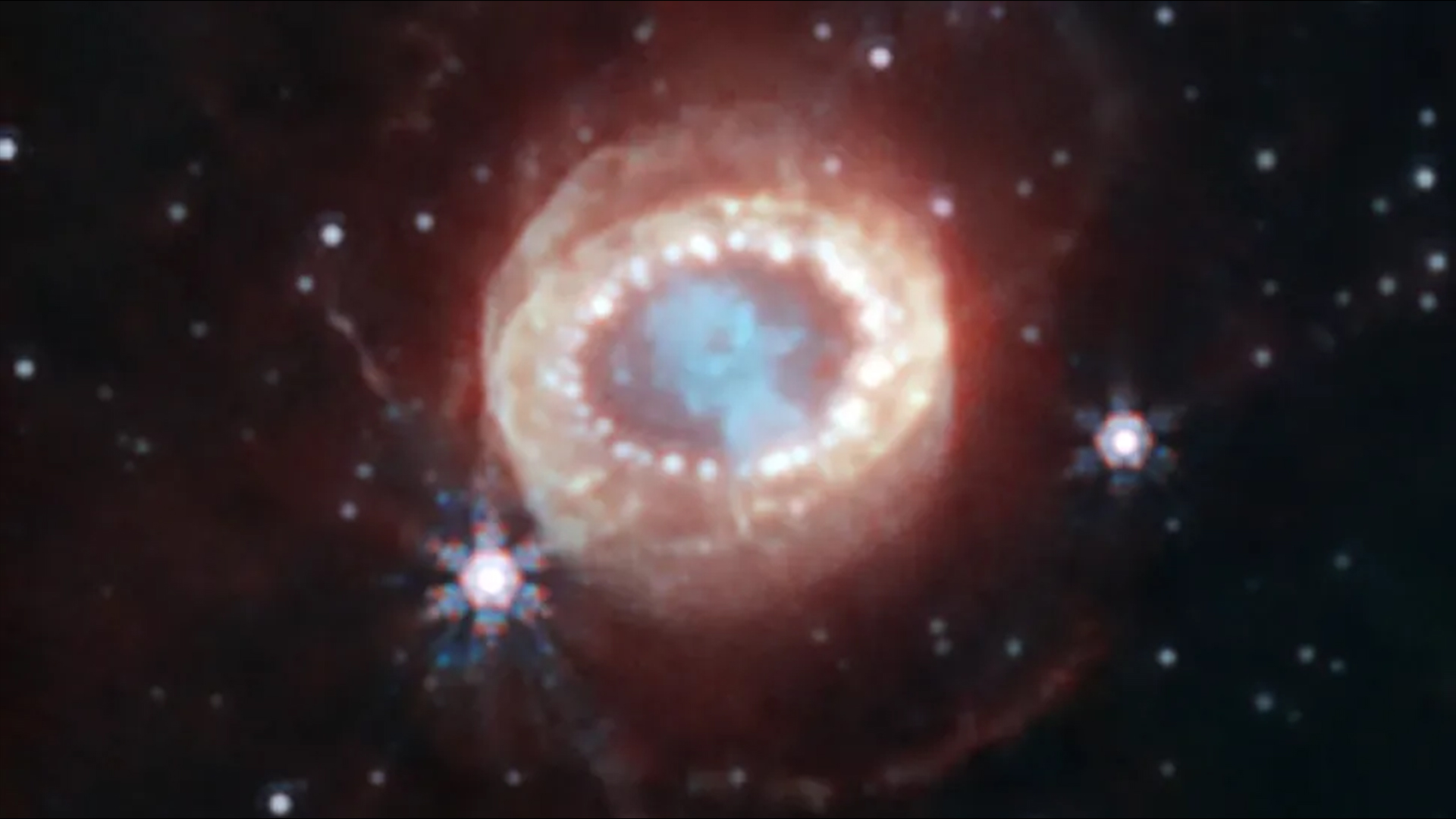Brightest supernova of past 420 years revealed in stunning new James Webb telescope images
This supernova signaled the explosive death of a supergiant star in the nearby Large Magellanic Cloud.

The remains of a star that exploded 36 years ago have fallen under the gaze of the James Webb Space Telescope (JWST) — and this observatory's Near Infrared Camera (NIRCam) captured the expanding stellar debris in unprecedented resolution, revealing brand new details about this burgeoning supernova remnant.
The closest observed supernova since Kepler’s Supernova lit up the Milky Way in 1604, this star explosion was first identified in 1987 and is aptly known as Supernova 1987A.
It sits about 168,000 light-years away from Earth in the Large Magellanic Cloud and represents the destruction of a blue supergiant star called Sanduleak–69 202. Before it exploded, that star was thought to hold a mass about 20 times that of the sun.
So bright was this supernova, in fact, that it was visible to the naked eye in the southern hemisphere — and astronomers have been tracking its expanding debris ever since. Now, the JWST has been brought to bear on the supernova’s remnant in a study led by Mikako Matsuura of Cardiff University, in the UK, resulting in this spectacular image of a dead star's aftermath.
Matsuura’s project used the JWST to measure the expanding supernova's shockwave as that wave interacts with surrounding material. When massive stars, such as blue supergiants, near the end of their lives, they become unstable and begin throwing off large amounts of matter. The Hubble Space Telescope has previously watched as Supernova 1987A's expanding shock wave, initially traveling at about 7,000 kilometers per second (4,350 miles per second), caught up to and collided with a ring of circumstellar debris ejected by the doomed star during the 20,000 years or so before it went supernova. As the wave clashed with this ring, it slowed to about 2,300 kilometers per second (1,430 miles per second).
Clumps within this ring gradually brightened, appearing as a bracelet of pearls. Two other rings, which appear to be in a different plane to the main ring as well as thinner and more faint, are more mysterious; astronomers have speculated these rings could be where the star’s stellar wind, emitted before the supernova, interacts with material the star previously ejected.
Alternatively, they could be getting illuminated by jets from an unseen neutron star which experts believe must have formed alongside the supernova explosion. The JWST has revealed new details on this front, showing that the shockwave has expanded beyond the main ring and reaccelerated to about 3,600 kilometers per second (2,236 miles per second) while producing new hot spots that may, with time, become as bright as those previously identified.
Get the world’s most fascinating discoveries delivered straight to your inbox.
More diffuse emission in the form of a general glow is also seen as the blast wave from the supernova excites gas around the site of the explosion. Additionally, The JWST spotted something new: Inside the main ring, where gas and dust forms a keyhole-shaped ejecta cloud, there are two puzzling arcs, or crescents. These features, the team suggests, could represent the outer layers of gas blasted out by the supernova — we are seeing this bit at an angle.
The JWST will continue to monitor the expanding supernova remnant as it evolves, as well as search for the neutron star at the center of the explosion, which so far has not been seen.
There is, however, indirect evidence for the neutron star in the form of X-ray emission detected by NASA’s Chandra and NuSTAR X-ray observatories, as well as observations by the Atacama Large Millimeter/submillimeter Array (ALMA) that indicate the neutron star could be hidden within one of the clumps of dust at the heart of the remnant.




